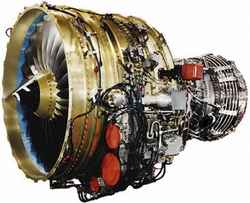Southwest 737's CFM56 Shed Spinners In November
 The National
Transportation Safety Board is so concerned with finding a missing
aircraft engine part in northeast Texas that it's reportedly
considering a search on a scale normally reserved for missing
pilots and passengers.
The National
Transportation Safety Board is so concerned with finding a missing
aircraft engine part in northeast Texas that it's reportedly
considering a search on a scale normally reserved for missing
pilots and passengers.
As ANN reported, back on
November 17, 2007 Southwest flight 438 was climbing out from Dallas
Love Field when passengers heard what they called an "explosion"
from the left engine at 25,000 feet. When the 737-300 returned to
Love Field, it had a gaping hole in the engine cowling, and it was
quickly determined the engine's fan blades had suffered a
catastrophic, uncontained failure.
Southwest was criticized in blogs by angry passengers for
understating the engine failure as a "vibration" on takeoff, and
for sending a letter to the flight's 133 passengers which
explained, "The fan blades on the front of the engine were damaged,
and rattled around the engine's intake area."
Passengers countered neither that description -- nor the FAA's
preliminary incident report -- adequately explained what happened.
"It was not during takeoff. There was a lot of damage. There was no
vibration. It doesn't say anything about an uncontained explosion
at 25,000ft," said one passenger, only identified as "Joe."
The engine in question is a CFM56-3B1, the most popular airliner
powerplant currently flying. The engine is manufactured by CFM
International, a joint venture between General Electric and Snecma,
the latter now a division of the French aerospace company SAFRAN
Group. If there's a problem which may affect more of these engines,
it could represent a significant risk, due to the number of engines
in service.
The front and rear spinners were lost in the engine failure, and
NTSB says finding the front spinner is critical to determining
whether the spinner or the turbine fan blades failed first.
 The front spinner is a
dome-shaped object about the size and shape of the top cover to a
medium-sized barbecue grill. Based on the flight's speed and
location and weather conditions at the time, investigators believe
the spinner landed in a marshy, rural area of Hunt County, probably
west of state Highway 50 and south of County Road 4403, according
to KXAS-5.
The front spinner is a
dome-shaped object about the size and shape of the top cover to a
medium-sized barbecue grill. Based on the flight's speed and
location and weather conditions at the time, investigators believe
the spinner landed in a marshy, rural area of Hunt County, probably
west of state Highway 50 and south of County Road 4403, according
to KXAS-5.
Investigators say this is the first time ever they've had to
search for a spinner. They don't know whether it will be found
intact, or may have been broken up into smaller pieces.
The public has been alerted to look for the object, and Cattle
rancher Mike Crowell, who owns most of the land in the area, says
he's been keeping an eye out while working his ranch. But, Crowell
says, he'd need lots of help to properly search his entire 300-acre
property for the part.
NTSB now says it may provide exactly that -- a full-scale search
of Crowell's property, and may expand the search area.
Crowell says the government investigators are welcome on his
property, but tells the television station "If that plane part fell
in certain areas, it might be years before somebody stumbled on
it."
 ANN's Daily Aero-Linx (05.02.24)
ANN's Daily Aero-Linx (05.02.24) ANN's Daily Aero-Term (05.02.24): Touchdown Zone Lighting
ANN's Daily Aero-Term (05.02.24): Touchdown Zone Lighting Aero-News: Quote of the Day (05.02.24)
Aero-News: Quote of the Day (05.02.24) ANN FAQ: Contributing To Aero-TV
ANN FAQ: Contributing To Aero-TV NTSB Final Report: Cirrus Design Corp SR20
NTSB Final Report: Cirrus Design Corp SR20




